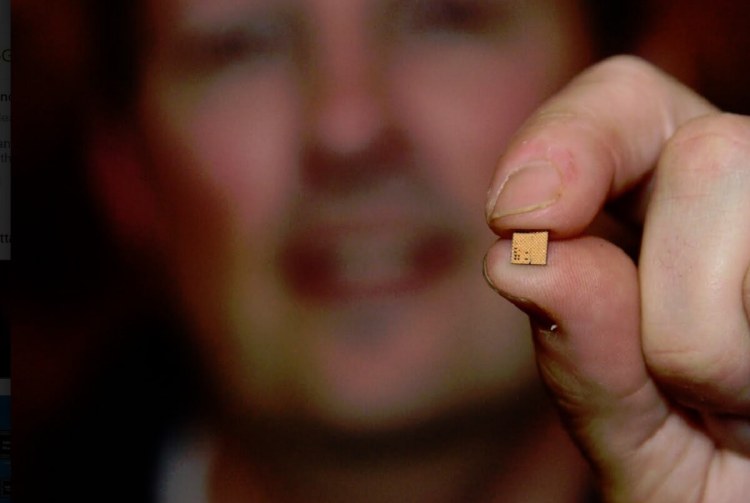
Above: Intel is making a whole family of wireless components for 5G.
VB: I had a conversation with Gary Shapiro of the CTA. I asked him about the next administration and whether net neutrality would be a big deal as far as an agenda push. He said, “Possibly, but what I’m concerned about is why the U.S. still has such expensive broadband relative to a lot of other places, and what you get for the price you pay.” Once you bring this all down and make this more competitive, a lot of other benefits accrue to consumers and businesses.
Topol: I don’t have much of an opinion on the way the model is monetized. But I can tell you, again, that our focus is to make sure the solutions are there for both licensed and unlicensed. What models are built above that is up to partners and OEMs beyond us. But when you look at 5G, you’ll see very disruptive business models come in. Companies aren’t going to follow the playbook used in technologies to date. You should fully expect that with 5G. That type of pressure, that type of competition, for us, it’s exciting. We’re ready. We’re making sure our solutions support both incumbent players in the industry and disruptors.
VB: What else is on your plate right now?
Topol: In the end, our goal is to power 5G end-to-end. When you look at Intel’s assets, we play in 4G. We’re a leader in computer and other technologies. But 5G, when you think about the computing intelligence, the network capability, this brings all of Intel’s strengths together. We’re excited. I just want to make sure that we can go out and support all these new business verticals. That’s what keeps me busy. You’re going to see some exciting uses for our 5G platform in the coming year.

Above: Brian Krzanich, CEO of Intel, demos the Firefly drones from Ascending Technologies at CES 2015.
VB: Some things are related. Drones are going to be collecting a vast amount of data, and that has to be transmitted somehow.
Topol: Exactly. There’s a platform approach with all these categories. If you think about the car, about drones, about VR, 5G is like AI. It has a place in all of these things. We can quickly build a testbed environment, because we have solutions all through the space. We supply the cloud. We supply the core access network. We build modems and APs for devices. When a partner comes in and says, “I want to test collaborative AR in a 5G environment,” we can bring all those assets together. It’s one stop.
That’s the goal this year, to build as many of those testbed environments as possible. As we come to CES each year, we’ll be showing more and more use cases that benefit the consumer.
VB: How do you see Intel’s position versus the competition here, like Qualcomm and others?
Topol: I can’t comment on Qualcomm’s road map. I can tell you that we were first, a year ago, to demonstrating a 5G mobile trial platform. We were first in showing millimeter-wave RFICs that support, essentially, 5G spectrum and data rates. We’re now first with an RFIC supporting both lower frequencies, sub-six-Ghz and millimeter-wave. We’re announcing the first global modem that supports spectrum in almost every country in the world.
Our goal is to be a leader. We’re trying to put those prototypes in place. There’s still a lot of unknowns with 5G. We don’t know all the use cases yet. All we can do at Intel is make sure we’re building the right technologies, the right silicon platforms, to enable our partners to go adapt, modify, and test different use cases.


